Harold’s Blog: A Week of Meetings, Repairs and Reopenings
Cary, NC — This week the council held its first business meeting in almost two months. Since we are still in a State of Emergency, some council members participated remotely.
Monday – Meetings with Town Officials
As is typical on a Monday before a Thursday council meeting, I attempted to contact council members to hear their questions or concerns about the meeting’s agenda. I was able to talk with each council member and go over the agenda. Questions and concerns were expressed about the Perry Farm rezoning proposal and the Bainbridge rezoning proposal.
Later Monday I held a WebEx meeting with town staff to go over the agenda items. We reviewed the items and discussed council questions and concerns, and what should be in the staff report. Our meeting lasted about 35 minutes.
My last scheduled meeting Monday was my weekly one-on-one with the town manager. Our discussion included honoring high school seniors and COVID-19 issues.
Tuesday – Virtual Council Meeting Practice Run
Tuesday I joined staff in practicing our first virtual town council meeting. While last week’s virtual town hall meeting helped, we needed to run through a meeting that included live calls for the public hearing. Our practice went without a hitch and we were done within an hour.
Thursday – Biennial Survey Results & Town Council
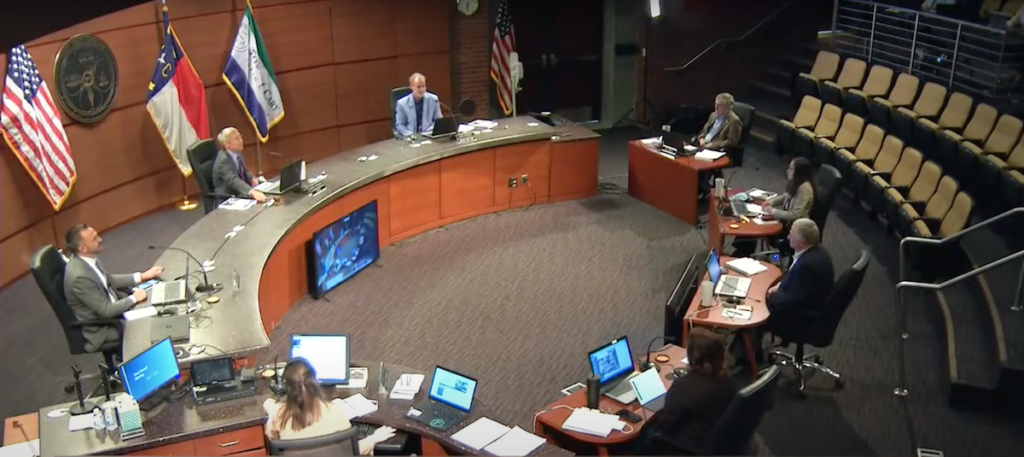
Thursday the town released the results from the biennial survey. You can review the electronic version here. According to the Executive summary: “The results for the Town of Cary’s 2020 Biennial Citizen Survey were exceptionally positive and reflect the best ratings the Town has earned for any survey period. A total of 400 residents were surveyed and the resulting margin of error was ± 4.89%. The telephone survey methodology included listed, unlisted, and wireless numbers in the sampling frame with 92.8% of the numbers contacted being wireless. …”
Thursday night was Cary’s first virtual town council meeting in history. Council member Robinson was attending remotely, and all other council members were present. This was to make sure all council members could practice social distancing. On the agenda were 10 consent items, 1 public hearing, and 2 discussion items.
The public hearing was for the Community Development Block Grant (CDBG) Consolidated Plan & FY2021 Funding Recommendations. While we were set up to have live callers for the public hearing, none were received. However, we did have 26 comments before the public hearing which were summarized by staff. After the public hearing the council approved the plan unanimously.
The first discussion item was the Bainbridge rezoning at Chapel Hill Road and Maynard. This was last seen by council in 2018. At that time, I believe the council majority would not have supported the proposal. Since that time, several conditions were added by the developer including a one-acre site dedicated to the town which could be used for the relocation of the Nancy Jones House, Cary’s oldest house. This one-acre site is an ideal location since it is a few hundred yards from the original site. While I am exasperated by the number of apartment proposals that are continuously submitted to the town, I know that this location could not realistically be used for any other type of development. With the addition of the potential location for the Nancy Jones house I reluctantly supported the rezoning which was passed unanimously.
Our last discussion item was proposal which had 189 dwelling units to include a mix of townhouses and multi-family units, and a maximum of 12,500 square feet of commercial uses and 17,000 square feet of office uses. Since it was so close to I540, I believe it was the most appropriate use. This was approved unanimously by council.
Our council meeting concluded after 45 minutes.
Friday – NC Metro Mayors
Friday I participated in the weekly meeting of the North Carolina Metro Mayors. Here is the Executive Director’s summary of that meeting:
Brief State Legislative Update
Coronavirus Relief Package (Policy Issues S704/Funding Provisions H1043)
- Appropriated approximately $1.5B of the $3.5B in federal funding from the CARES Act.
- Both bills were signed into law by Governor Cooper on Monday (May 4)
- The package created a local government reserve with $300M. Of that, $150M would go to counties for the purpose of covering expenses specifically related to the COVID-19 response.
- Counties may allocate funds to municipalities.
- Having good conversations with NCACC on how to participate in that funding.
Legislative Schedule
- The legislature will return on May 18. They will take up more COVID bills and potentially other policy bills.
- There is still a big question mark on how long each chamber will be there and if they will meet briefly and then return later in the summer to address the budget.
- Everything is very much up in the air right now in terms of a legislative schedule.
- House Select Committees on COVID will continue to meet.
Governor’s EO 138
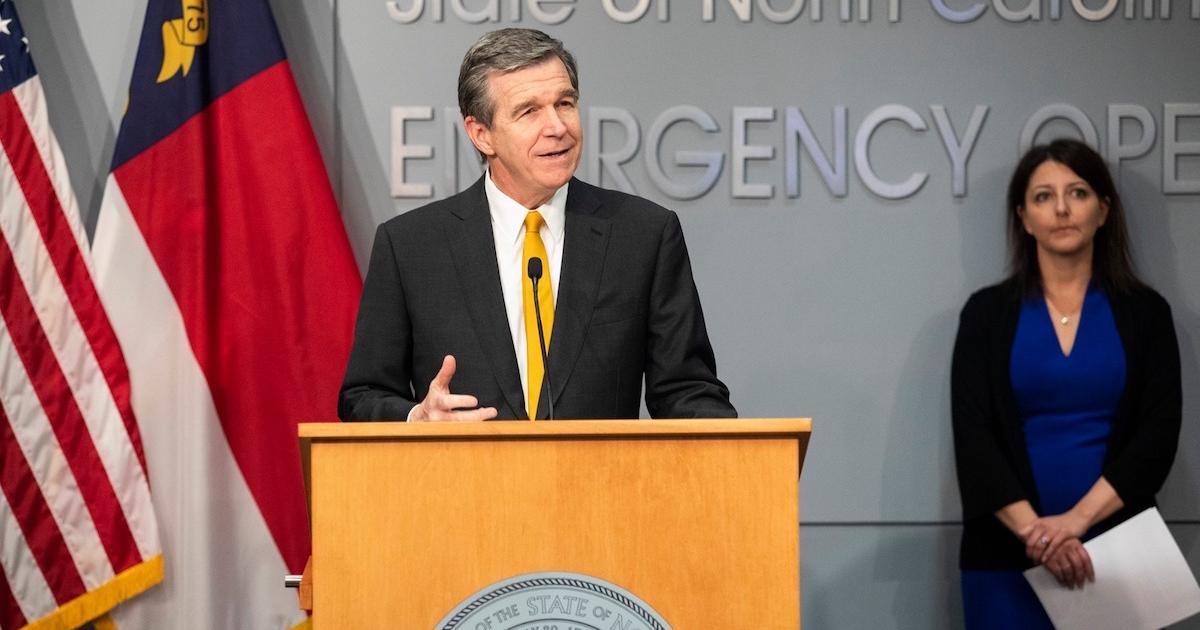
- The Executive Order initiates Phase 1 at 5 PM today (May 8) to begin the State’s reopening process.
- The Stay at Home Order is still in place but modified to allow for more reasons for people to leave home and allow for more commercial activity.
- Retail businesses are allowed to reopen under certain restrictions. The link to the EO above contains detailed information on the Order including an FAQ.
Federal Update and Strategy
The Big Picture: 3 stages – response, restore and recover
Guest Speakers:
- Jim McCleskey, Director of North Carolina Washington Office – Gov. Cooper’s staff
- Leslie Mozingo, CEO Strategics – federal lobbyist for several Metro Mayor cities
Initial Coronavirus Relief (3 bills) – Leslie
- Emergency Supplemental Phase 1, the “Coronavirus Preparedness and Response Supplemental Appropriations Act (P.L. 116-123; March 6) provided $8.3 billion, most of which was directed to the Office of the Secretary of HHS for CDC, state and local health departments, and is available until 2024.
- Another $50 billion in FEMA money was released by the national emergency declaration. (NOTE: This is different than the public health emergency declared by the Trump Administration in January, making it easier for states to redirect staff to the virus response.)
- Phase 2, the “Families First Coronavirus Response Act” (FFCRA) (P.L. 116-127; March 18). Estimated cost of $192 billion, this legislation focused primarily on mandatory leave and unemployment insurance expansion.
- Phase 3, the “Coronavirus Aid, Relief, and Economic Security Act” (CARES Act) (P.L. 116-136; March 27). At $2.2 trillion, the largest disaster relief package in American history, had a total price tag of $6.2 trillion when combined with the Federal Reserve measures it provided. It built on some of the same benefits passed in previous packages, such as the health care funding for hospitals and health care workers, nutrition programs for children and seniors, and expanded unemployment benefits. It also provided hundreds of billions of dollars in new loans and grants to major industries and small businesses, direct cash payments to taxpayers, and the Coronavirus Relief Fund providing direct assistance to states and local governments over 500,000 in population.
Small Business funding bill “3.5” – Leslie
- Phase 3.5 is the $484 billion interim relief bill known as the “Paycheck Protection Program Increase Act” (Public Law 116-139; April 24) includes a boost for the federal small business relief program, hospitals and testing.
- What has been missing all along is relief to local governments under 500,000 and badly needed flexibility to cover revenues lost.
- Lawmakers are currently debating the next phase (Phase 4) of coronavirus relief legislation, and debate has centered on whether states and localities should receive funding, in what format and for what purposes.
Where we are going and brief discussion – Coronavirus Bill “4” – Jim
- The National Governors Association – as a bi-partisan body from across the nation are calling for $500B in state flexible fiscal relief and $250B for local governments.
- The US House Speaker has talked in broad terms in numbers, but there is unanimity among Democrats in both the US House and Senate for providing substantial, flexible fiscal relief for local governments. There is also some interest among Senate Republicans for allowing flexibility for revenue replacement for states and local governments, but they are going to need continued encouragement…
- There is an existing bi-partisan bill from Sens. Mendez (D-NJ) and Cassidy (R-LA) that would allocate $500B with broad flexibility. Anticipating an even larger total number in the House package for state and local governments, but don’t know for sure what that will look like.
- A letter was distributed from House Appropriations describing the methodology by which local funds would be distributed, (which would be different than how the state funds would be allocated). Funds awarded directly to municipalities using modified CBDG formula: 70% to municipalities of 50,000 or more and 30% to municipalities with less than 50,000 so that all municipalities benefit.
DOT
- There is a pending proposal from the National Association of State Transportation Officials for $50B in fiscal backstops for DOT. Powell Act funds are implicated in this due to cash balances our dot faces. DOT funding is a national issue in terms of the reduction in highway trust funds and gas tax revenues.
Schedule
- Senate is in this week and the House next week. In about a week we will know more about what is shaping up.
- Anticipate a back and forth two weeks from now and a package by the end of the month.
Next Steps
- The most effective lobbying we can do is through a strong coalition with local governments (both counties and municipalities) speaking with one voice to our Congressional delegation.
- Primary national organizations (NLC, US Conf. of Mayors and the Natl. Assoc of Counties) are working closely in Washington and it is important to reflect a strong, cohesive message here at the state level to our own NC Congressional delegation.
- We need to continue to impress upon our Congressional delegation how important this funding is.
- Working on putting calls together with Congressional delegation to discuss the need of flexible funding.
- It is important to maintain a sense of urgency to ensure the issue does not get caught up in a back and forth scenario in Congress – we need action in May. We need things to happen quickly so that we can be come out of this crisis confident and strong and ready to help rebuild our communities and economy – NOT waiting until later when the local budgets are already completed and Congressional impetus on this subsides….
Key Issues for Phase 4 of the Congressional Response to COVID-19
- Seek Congressional support for direct funding to local governments (cities and counties) to help fight this virus and its impact on our cities. The resulting expenses and loss of revenue is hard to overstate… The next round of legislation from Congress should allow our cities to replace revenue lost due to COVID-19 so we can maintain the level of services needed in our communities.
- Congress should also give us flexibility to use existing COVID Relief Funds (CARES Act) in ways that can help our cities – make it flexible to meet the needs of our cities as we fight the virus and work hard to help our economy recover. This means allowing past funds from the CARES Act to be flexible, including loss of existing revenue for the many important things we do for our citizens, including public safety, transportation and water resources for the citizens of NC.
- Allow local governments to qualify for the payroll tax credits related to the mandated leave policies set by the federal government in Families First Act (Phase 2).
- Here is a recent article (encouraging).
The meeting concluded after about 45 minutes.
Town Manager’s Report
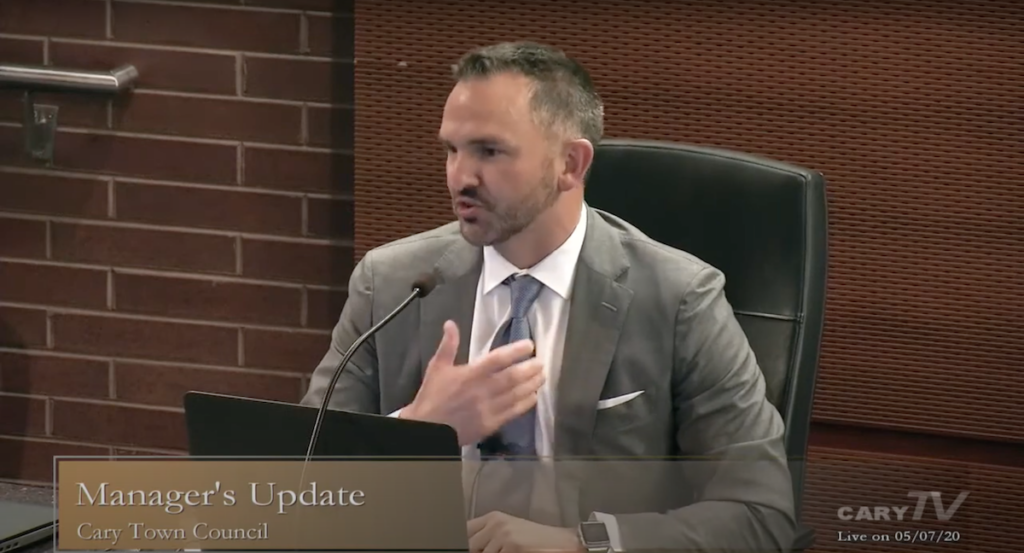
The town manager, Sean Stegall’s report for this week included:
Manager’s Message to Council
As other local governments begin to end their remote work and announce return-to-facility plans I have asked representatives from our Emergency Command Center (EOC) and Operational Framework Team (OFT) to take time to contemplate and begin developing a judicious phasing approach for our organization.
Our staff continues to operate efficiently, and as a result reopening from an operational standpoint is a non-issue. Simply put, our peers are not able to provide a full complement of services without being physically located together.
We are maintaining close to a 50/50 split between field and remote work. We will likely remain in the current mode longer than other Wake County municipalities and provide for the ultimate form of social distancing for our employees. As it turns out, our investment in citizen service technologies is having the unexpected benefit of safety for our employees. I look forward to continuing to advise you of our plans.
Thank you for your continued support,Sean
Operational Framework & Update
The Weekly Operational Message from Deputy Town Manager Russ Overton provided examples of how the operational priorities continue to press even with numerous employees working remotely. Early this week Russ and I met with members of the Finance Department to review and discuss options for the FY 2021 budget. I am thankful for an organization that is dedicated to keeping the Cary machine running.
The weekly operational report brings a close to the week’s activities outside of the Emergency Command Center (EOC). Please take a moment to review the weekly operational report.
Departmental Updates
Included below is a summary-level overview of the operational activities continuing to take place during this health emergency.
- Advisory Board volunteers received a token of appreciation this week! The Clerk’s office mailed gift cards to local businesses in honor of April Volunteer Appreciation Month; we have received lots of positive feedback in response to this gesture.
- An improved, New Vendor Application, went live on the Town’s website. This improved form utilizes DocuSign to allow vendors to securely submit banking information to set them up for payment.
- To date, PRCR has cancelled 6,600 registrations and refunded $392,500. Approximately 762 reservations have been cancelled and transferred to a later time.
- PRCR staff are reviewing different scenarios for summer camps and programming to prepare for eventual reopening.
- DRC pre-application meetings have returned to “normal” numbers. Currently, three to five meetings are held each week. Notable cases include:
- One Walker One Walnut–the development plan is anticipated to be approved next week, which will initiate the issuance of the building permit for the non-residential portion of One Walnut.
- Cary Towne Center–Cary met with the engineering team to review and provide feedback on the first portion of their development plan. This was heavily focused on transportation issues.
- Citizens created an additional 400 tons of garbage in April compared to 2019 numbers. This volume equates to an additional 4.5 pounds, per week, per household. While this may not seem like much, on average, our households generate about 25 pounds per week, which represents an 18% increase.
- The 2020 Water Main Replacement project will begin next week in front of Town Hall. Through August, Academy Street may be closed to thru traffic from the railroad tracks to Chapel Hill Road. This road closure will be performed in various phases so access from Academy Street may vary during construction. During this time, we ask that when possible use Harrison Ave/Chapel Hill Road or Chatham street/E Durham Road/Wilkinson Avenue as detours to get to and from Town Hall.
Old Library Site Refresh
A landscape crew was on-site to lay sod this week and a final touch-up of mulch will occur before the fencing is removed. Street sweepers will brush the parking lot to clean up any remaining soil with the finishing touch of having the parking lot restriped next week!
Thomas Brooks Park Repairs Complete
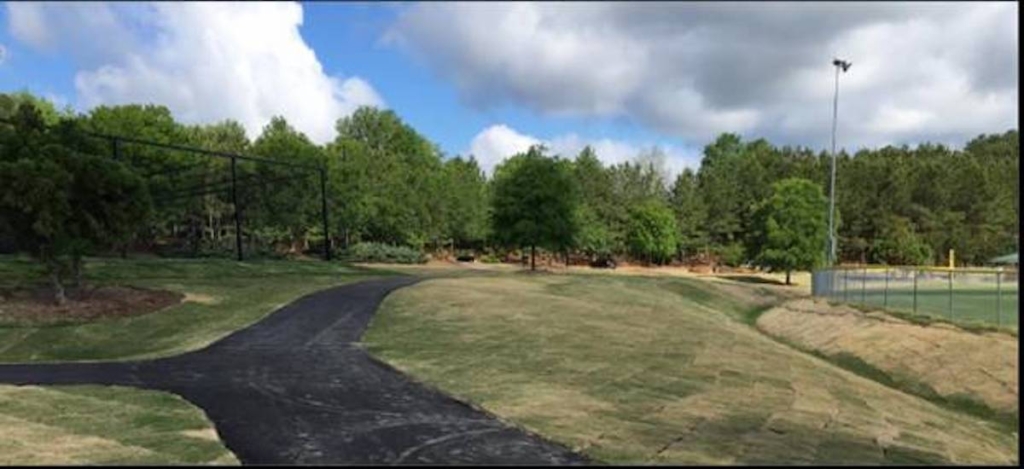
In 2017, Cary closed a portion of the walking trail at Thomas Brooks Park due to a slope failure. Earlier this spring the slope was repaired and this week the trail system was reopened as part of the larger ballfield drainage improvements at the existing athletic complex. During these repairs, we also renovated the batting cages to accommodate cricket play.
Flushing Idle Commercial Buildings
Unoccupied or idled commercial buildings can experience a deterioration in water quality that can be easily remedied by flushing the building pipes with fresh water from the Town’s water system. A multi-departmental team has been working with neighboring utilities to develop guidelines for commercial and institutional properties that will be reopening for service. This group effort has resulted in a coordinated message for business owners across the Triangle. Cary’s website has been updated with flushing recommendations, including detailed FAQs, and links to CDC guidelines. Approximately 1,500 non-residential customers have been contacted by email or telephone to notify them of this information. Cary’s 311 Citizen Advocates are armed with this information to help direct anyone who reaches out with questions.
Walker Street Reopens
Asphalt paving, installation of brick sidewalks, and new pavement markings are now complete, and Walker Street is open to traffic! Next week, signal related work will occur, including the removal of the temporary signal utilized during construction and turning on the new traffic signal and CCTV camera. Landscape work along the intersection will occur shortly thereafter. This was a wonderful project that improved pedestrian connectivity, enhanced aesthetics, rehabilitated water and sewer utilities and stormwater improvements that will improve downtown drainage.
Maynard Road Grade Separation
NCDOT is planning to construct a grade separated railroad crossing at Maynard Road north of E. Chatham Street. Two alternatives were considered and presented for public input. NCDOT held public meetings with business owners, Spanish speaking residents and the general public. NCDOT recently identified Alternative 1 as the preferred approach. This approach keeps Maynard Road on existing alignment to go under the rail lines.) NCDOT will host another round of public meetings this summer to present the Preferred Alternative, review additional public comments and begin design. Construction is currently anticipated for 2024.
Additional Information of Interest
I’ve found the following articles to be particularly interesting this week and wanted to share with your for your reading pleasure:
- Reopenings Mark a New Phase: Global ‘Trial-and-Error’ Played Out in Lives, The New York Times
- You’re Stronger Than Your Quarantine Fatigue, The New York Times
Get in Touch
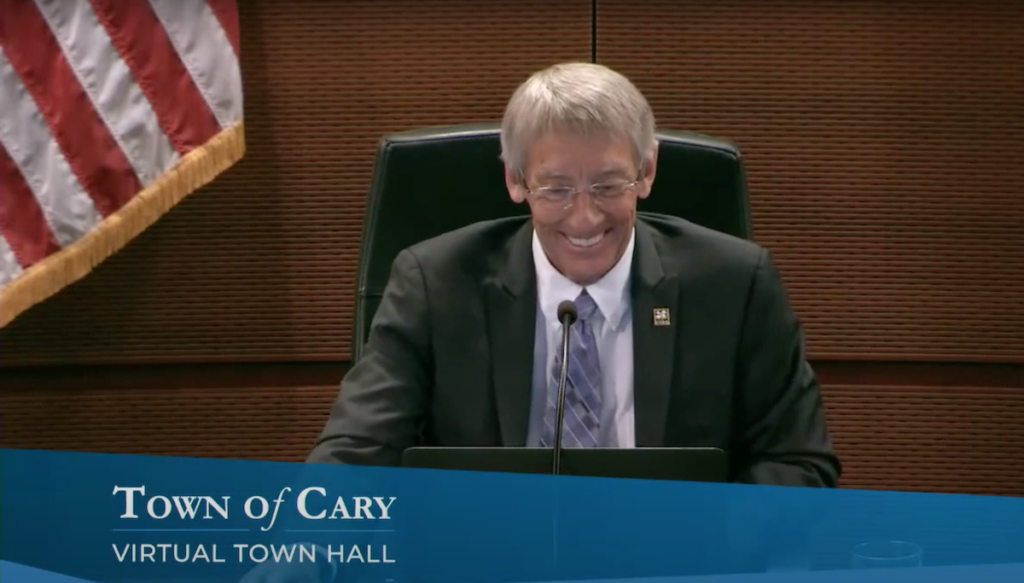
Emails from citizens this week included complaints about group homes on Askam Drive and Manchester Drive. Here is the staff’s response to those complaints:
“…While the Manchester address is familiar to staff, we have contacted NC DHHS about the Askam Dr. address to understand more about it. Here is what we know:
Group homes are regulated by the State (DHHS) and any municipality in the state, Cary included, has little to no authority to address issues related to the functioning of a group home. That said, we can enforce other ordinances and laws such as tall grass, sanitation p/u, criminal behavior and the like. More on that with the Manchester discussion.
The Askam Dr. address is properly conditioned by Cary zoning and permits. However, the Askam Dr. home is not listed on the DHHS website as a permitted group home. One of our compliance officers is working with a State case manager to understand more. To date, we have not received a response on this question.
Zoning is the lone municipal regulation for which the Town can act, and even for zoning that authority is limited. Our current ordinance limits group homes of 4 or more residents to no closer than 1/4 or a mile to another group home of 4 or more residents – and that is a straight-line measurement, not travel distance. Our zoning compliance authority is limited to monitoring the 1/4-mile distance. If that distance is met, the State obligates the Town to issue the Special Use zoning permit. Again, our regulatory authority is cursory in nature.
We have discovered the Manchester Drive address is not properly permitted by the State, nor is it properly zoned or permitted by the Town. We have issued a Notice of Violation to the owner, who failed to respond to a deadline that ended this week. As a result, we will pursue a penalty for the owner, but that is not likely to change the circumstances in the near-term. Although we are working with the State to resolve this matter, I have no report on their enforcement process or timeline. We are doing everything we can to remain in contact with the case manager to stay informed.
Regarding the tall grass and sanitation complaints for Manchester: When we are notified of these complaints, we have taken action. The latest tall grass complaint deadline ended this week, so if the owner has not resolved the violation, the Town will mow the yard and will invoice the owner. On the last sanitation complaint for which I am aware, I called the Public Works director personally and within the hour he drove by the house to investigate. While the container was full and cardboard boxes were piled next to the street, the PW director informed me that the sanitation truck had not yet served Manchester Drive that day. The container was emptied and boxes picked-up later that day as scheduled for that day.
For the police and fire department responses to Manchester, I have reviewed the summation of them with the fire chief and police chief on two occasion over the last 4 months. We have found the need for those emergency services were valid in every case. Fortunately, no one has been injured either medically or physically that would necessitate hospitalization or arrest. Moreover, while the number of responses for 1019 Manchester is high for a single residential address, there are other addresses throughout town, that are not associated with a group home with similar demands for emergency services. While public safety interventions like these may interrupt the neighborhood (as you and others have shared), the issues at play here are of a human condition and not a condition of the group home itself. To that end, this situation is compounded by the fact that the home is functioning as a group home without permit and as previously mentioned, we are working with the DHHS to resolve. …”
Other emails include:
- A complaint about overflowing garbage cans in parks.
- A complaint about an HOA decision on common area (the town does not have authority to intervene in most HOA matters including this one)
- Comments in support of rezonings (council approved on Thursday)
- A request to find out who owned towers on Towerview Drive and what they were for
- A complaint about a property on Shirley Drive
- A request to lower water tier rates (Any adjustment to rates is done at budget time. In addition, we have a mandated balanced budget which means if we lose revenue, we, the taxpayers, will have to make up for it somewhere else)
Requests to open up government with legally threatening terms promising to violate stay at home orders (We are under state mandated Stay-At-Home orders. We have no authority to supersede any state mandates.) - Over 700 emails regarding the issues at Umstead Park (The decision-makers are the Wake County commissioners and the RDUAA and NOT the Town of Cary. Unfortunately, all these emails had to be filtered to allow me to do my job as mayor)
Activities for next week include staff meetings, a meeting with the Wake County Mayors Association, and a Meeting with the North Carolina Metro Mayors.
Well, that is all for this week. My next post will be on Sunday, May 17th. Although I have Facebook and Twitter accounts those are not the best means of communications with me. Please send all Town of Cary questions or comments to Harold.Weinbrecht@townofcary.org and email personal comments to augustanat@mindspring.com.
From the blog of Cary Mayor Harold Weinbrecht. Thomas Brooks Park photo courtesy of TOC Staff, Governor photo courtesy of the Governor public Facebook page, all others were screen-captures from virtual Town meetings.

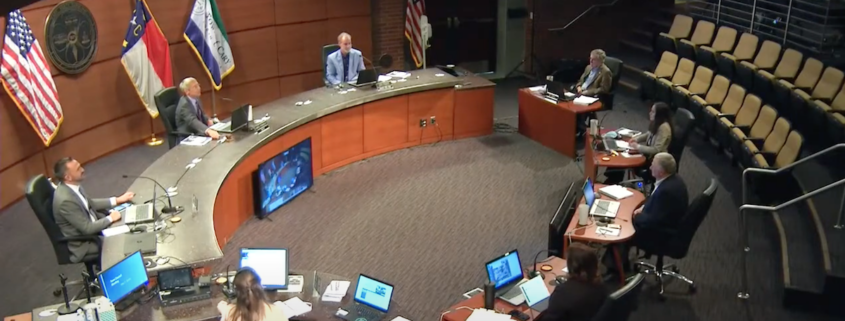
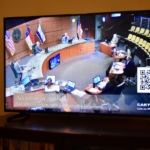

I just wanted to once again show my concern for the graffiti that is starting to show up around Cary. I live in the Weston area in North Cary and have seen graffiti in North Cary Park, the Black Creek Greenway, and at the Greenway entrance on Norwell Street next to the Bexley subdivision. Being originally fron Southern California, I have witnessed the damage and visual scourge that graffiti brings if left unchecked. Please don’t let this happen to our beautiful town!